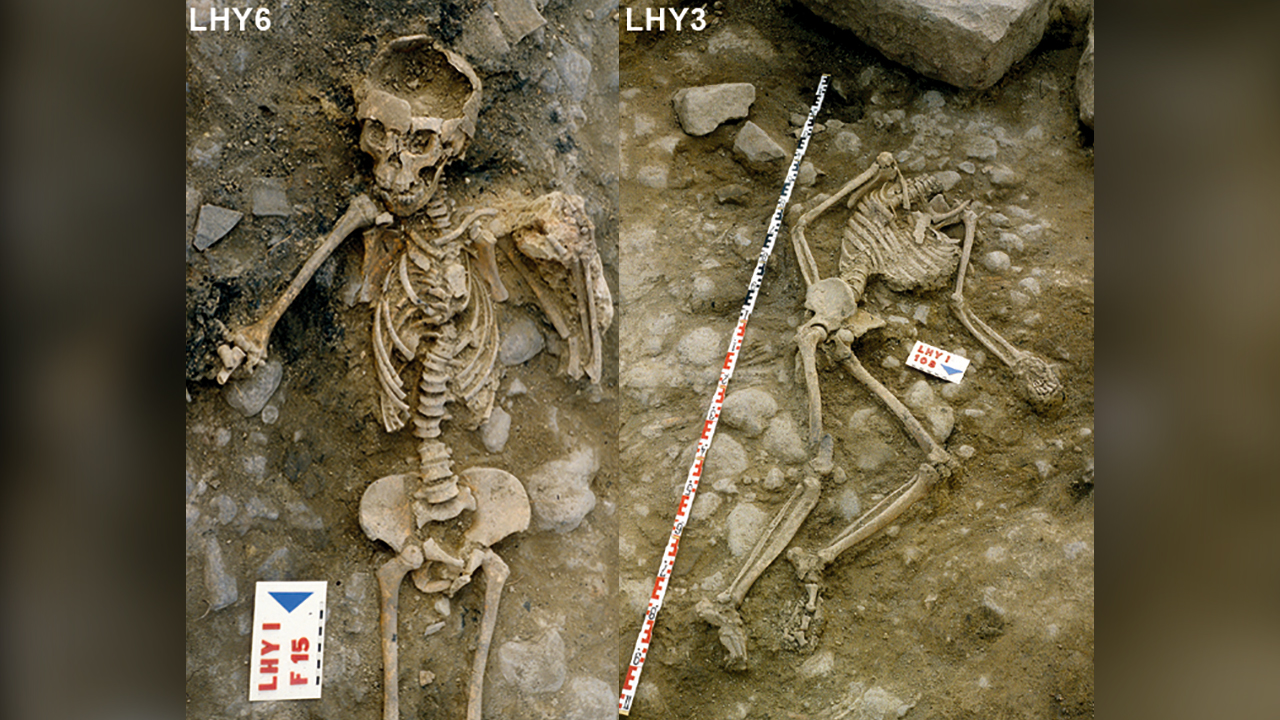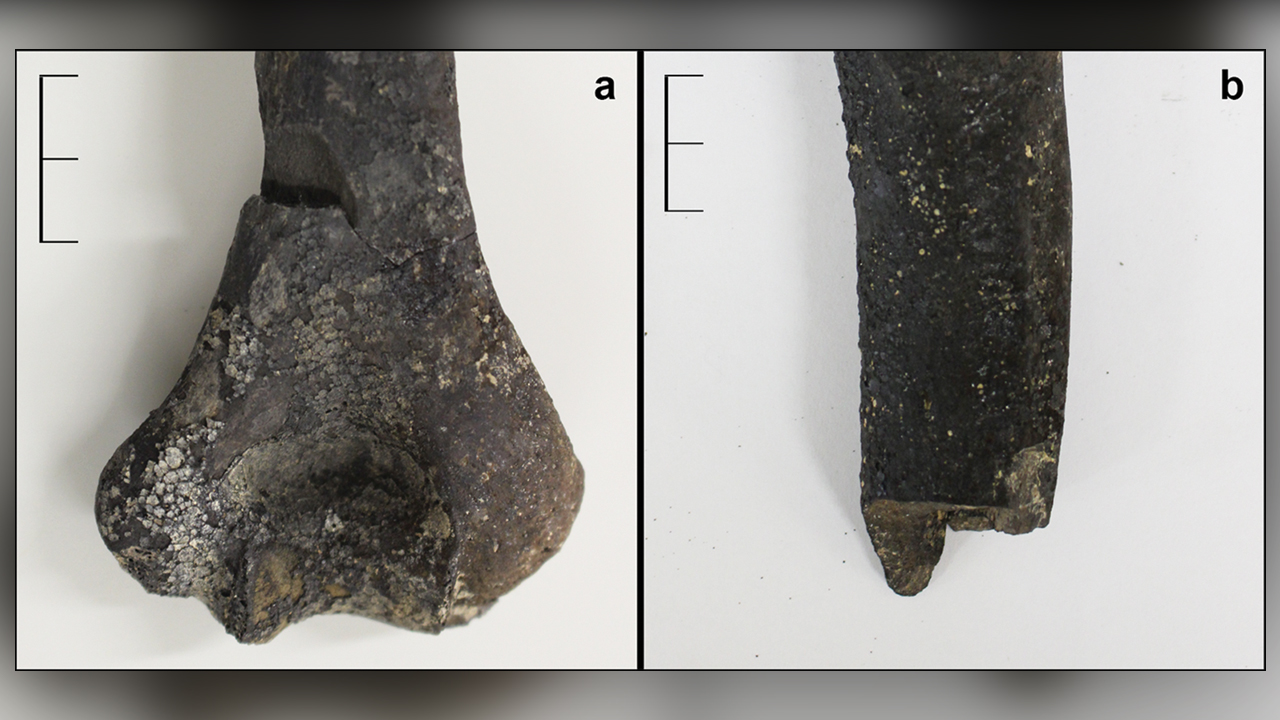Decapitated and dismembered skeletons reveal lost Iron Age massacre
Attackers may have timed the attack to coincide with a public gathering.

A brutal attack on an Iron Age town in northern Spain during the mid-fourth or late third century B.C. left more than a dozen bodies — men, women and children — scattered and smoldering in the streets, as the town burned.
Injuries inflicted upon the people who died were horrific. One person was decapitated, two had severed arms, and the remains of nearly half of the individuals showed signs of mutilation, archaeologists recently discovered.
New analysis of the victims' bones — the first detailed investigation of their injuries — suggests that they were murdered by a neighboring community during either a calculated power grab or an act of revenge.
Related: 25 grisly archaeological discoveries
The site of the massacre was once a bustling, economically thriving town called La Hoya, located in northern Spain's Rioja Alavesa region. It was occupied from the 15th century B.C. to the third century B.C., and at its peak was home to about 1,500 people. Archaeologists uncovered the prehistoric settlement in 1935, and excavated it from 1973 until around 1990, uncovering about 15% of the site, the scientists reported in a study published today (Oct. 1) in the journal Antiquity.
Though only a fraction of La Hoya was excavated, it was immediately clear that something terrible had happened there. Burned skeletons — at least 13 complete and partial remains — were found lying in the streets and inside buildings. One adult male had been decapitated, though the archaeologists did not find his skull. Damage to his right clavicle and shoulder bone revealed that his attacker struck more than once, according to the study.
Bone injuries of another male victim suggested he had been stabbed repeatedly from behind; a teenage girl suffered an amputated arm, which was found a short distance from her body, still wearing five copper-alloy bracelets, the researchers reported. They found no signs of weapons near the bodies. Nor were there any defensive injuries, and the damage appeared to have been inflicted at close range. All of these clues pointed to a surprise attack.
Sign up for the Live Science daily newsletter now
Get the world’s most fascinating discoveries delivered straight to your inbox.

Scattered craft items, hobbled livestock and vessels filled with recently harvested cereal grain suggest the attackers invaded La Hoya during a market day in the summer or early autumn. By deliberately choosing a time when public spaces would be crowded, the attackers would have ensured a higher number of casualties, according to the study.
Yet despite the display of abundant goods in La Hoya at the time of the attack, the city was unplundered and its riches untouched, hinting that the motivation for the violence was political rather than for economic gain, the scientists said.

A violent legacy
The Roman occupation of Iberia, beginning in 218 B.C., was brutal, and has long been credited with sparking cycles of regional violence and upheaval. Two Roman massacres in Iberian towns — Cerro de la Cruz in 150 B.C. to 130 B.C. and La Almoina in 75 B.C. — are known from archaeological evidence. In Cerro de la Cruz, the Romans enslaved 10,000 people and beheaded 500 of them; in La Almoina, they shackled and executed 14 unarmed men. There, one man was beheaded, another was pierced by a javelin, and several had all of their limbs cut off, according to the study.
However, the La Hoya carnage predates Roman conquest in northern Spain, so it's possible that political instability and deadly clashes between Iberian rivals were already well underway prior to the arrival of Roman forces, the scientists reported.
An attack on La Hoya, which was politically and economically important in the region, likely had dramatic repercussions on the balance of local power, "by either creating a power vacuum or by consolidating the position of a rival community," the study authors reported.
Because the bodies were left unburied, the village was probably abandoned after the slaughter. Some who have analyzed the La Hoya site previously suggested that the townfolk may have regrouped and continued to live in La Hoya for centuries after the massacre, according to the study. But the preserved aftermath of the attack and the condition of the remains make that scenario highly unlikely, "given the scale of death and destruction revealed by the excavations," the scientists wrote.
Originally published on Live Science.

Mindy Weisberger is an editor at Scholastic and a former Live Science channel editor and senior writer. She has reported on general science, covering climate change, paleontology, biology and space. Mindy studied film at Columbia University; prior to Live Science she produced, wrote and directed media for the American Museum of Natural History in New York City. Her videos about dinosaurs, astrophysics, biodiversity and evolution appear in museums and science centers worldwide, earning awards such as the CINE Golden Eagle and the Communicator Award of Excellence. Her writing has also appeared in Scientific American, The Washington Post and How It Works Magazine. Her book "Rise of the Zombie Bugs: The Surprising Science of Parasitic Mind Control" will be published in spring 2025 by Johns Hopkins University Press.









